Urban waste management is a crucial component of our constant interaction with the environment within and around our cities. Managing waste efficiently and sustainably is a unique challenge for us all that depends on development trends, socioeconomic composition, political situation, and a host of other factors.
This dependence is especially evident in China, where the past 30 years of rapid growth in size and population of cities has brought about mass lifestyle transitions as Chinese people migrate from rural to urban areas. The massive shifts to consumerist lifestyles by millions of Chinese have produced tremendous quantities of waste, while underdeveloped public waste management services have become severely stressed. On the surface, addressing China’s urban waste may seem like an increasingly daunting task. However, I believe that if sustainably managed and reclaimed, China’s urban waste stream will be a valuable resource and a solution to urban social justice issues, making Chinese cities healthier human and natural ecosystems.
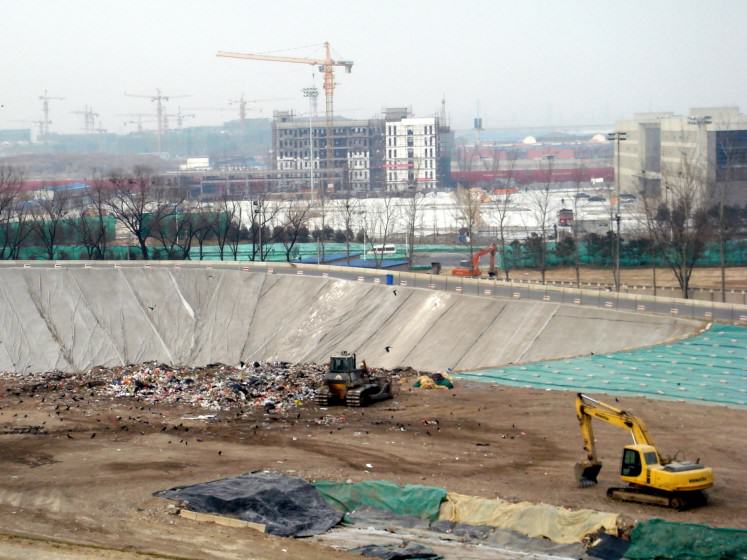
China’s urban waste problem
China produces around 300 million tons of waste a year, the large majority of which comes from cities. Currently, Chinese urban waste management services generally collect unsorted municipal solid waste (MSW) to be disposed of in landfills or waste incinerators around the periphery of the city or further out into the countryside. Even if separate bins are available for recyclable and non-recyclable waste, government waste services do not have the capacity to operate a recycling system; the separated waste is bundled together into one truck all the same.
The composition and quantity of Chinese urban waste creates many problems for landfills and waste incineration. Chinese landfills are similar to other landfills around the world in that organic matter does not decompose properly in the landfill’s anaerobic conditions. This results in the release methane, a potent greenhouse gas. Since most of the solid urban waste stream consists of organic waste, the Chinese urban waste stream is an inefficient fuel for incineration. Even if proper management systems for composting, recycling, and further landfill waste reduction were put in place, a societal shift is still necessary for urban residents to change their consumption and waste disposal behaviors for waste management systems to be effective.
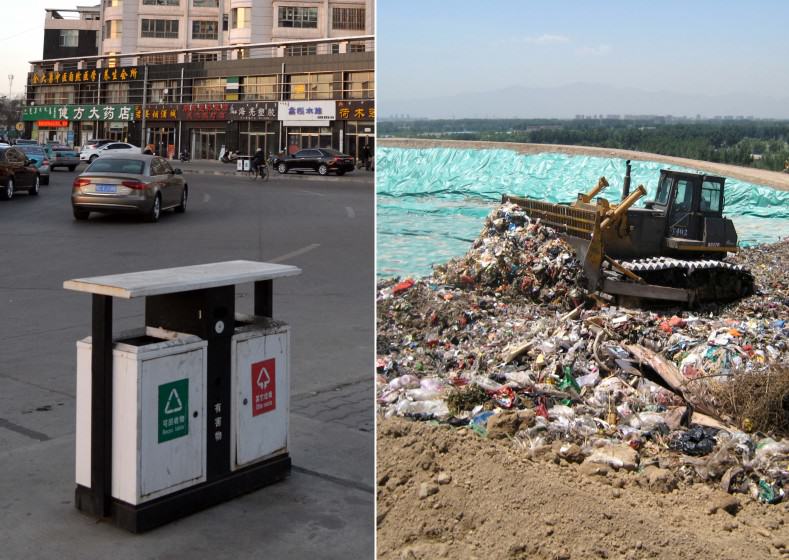
The human face of China’s informal recycling sector
It is important to consider the human element of China’s urban waste system to understand how it affects the livability of Chinese cities. In addition to poor waste collection infrastructure, investment, and enforcement, the current waste system in China perpetuates social inequalities for rural-to-urban migrants who enter urban spaces with low socioeconomic statuses. Landfills and incubators are pushed to the outskirts of the city where poor migrants live, bringing along toxic fumes of incineration, disturbances from trucking of waste, and pollution of water, air, and soil. This leaves the wealthier inner city areas relatively clean, while the pollution impacts of their waste are exported to small towns and poor communities that are socially, politically, and economically marginalized from the city. Beijing Besieged by Waste, a documentary directed by Wang Jiuliang, vividly portrays this phenomenon.
A large number of migrants dominate urban recycling of any valuable materials, and make a living off of hand picking through rubbish bins outside buildings, along streets, etc. to collect paper, cardboard, plastic, metals, electronic waste, or anything of recyclable value. This informal recycling sector is extremely efficient. It is estimated that approximately 0.56-0.93% of the Chinese urban population, approximately 3.3-5.6 million people, are involved in the informal recycling sector, and are responsible for recycling about 17-38% by weight of Chinese municipal solid waste. The informal recycling sector’s contribution to urban waste management is significant even if the exact amount is unclear; it has never been formally documented. For example, local waste experts and activists say that in Beijing alone there are around 200,000 informal collectors working seven days a week, collecting around 30% by weight of the total MSW. In cities all over China, informal collectors take advantage of the local governments’ inability to provide adequate infrastructure, services, and education for a formal recycling system.
However, the migrants involved in this informal sector earn very little for the effort they spend collecting waste across the city. While urban recycling depends on their hard work, informal collectors are often older, still live in very poor conditions, and have jobs which become increasingly difficult as city areas expand. Informal recycling centers get shut-down by local governments and relocated farther and farther from the center of the growing city, increasing collectors’ commute costs and time, and reducing the city’s overall recycling rate. Experts in this field fear that as the informal sector faces greater challenges, urban recycling rates will decline, and recycling programs that governments establish without the informal sector will fail to be as efficient at reclaiming these valuable materials.

Attempts to solve the problem
Chinese cities have tried different methods to address urban waste challenges. Several years ago, cities tried highly technical composting systems which were theoretically able to sort mixed waste mechanically and compost the biodegradable portion of the urban waste stream. Unfortunately, the system did not work as planned, and the toxic sludge output from the composting process was not only unusable, but also a public health hazard. Cities quickly abandoned the composting push, except for some small community-level composting pilot programs that have been successful in some areas.
More recently, there has been a large interest in waste incineration, fueled by the idea that burning waste will address landfill space limitation issues and the energy from incineration will generate revenue for the city. While some regard incineration as an acceptable practice in the U.S. and Europe, the unsorted Chinese urban waste stream, with high proportions of damp organic material, does not make for efficient incinerator fuel. Much more fuel is required to burn damp waste, increasing the costs and decreasing if not nullifying the profits from energy generation.
Waste incinerators in China are also poorly regulated, and the resulting toxic air pollution is an environmental and public health issue that affects nearby poor communities the most. The central government’s recent interest in using anaerobic digesters to decompose organic waste and capture the methane as a fuel source is potentially a positive shift in the right direction. There are now many large-scale anaerobic digester pilot projects in China.

Paper, plastic, metal and organic wastes are valuable resources for urban production and consumption, and should be efficiently and justly collected, processed and fed back into the urban ecosystem to establish a more circular economy.
Chinese cities’ waste composition and social circumstances make adopting environmentally sustainable and socially just waste management practices a huge opportunity for addressing many Chinese urban issues.
Below are a few key areas that I think are among the most important for decreasing the environmental footprint of China’s urban waste.
- Food scraps can be fed to locally raised pigs. With pork being such a large and growing portion of the urban Chinese diet, local production of pork with locally produced food waste would decrease the environmental costs of pork production, feed production, and transportation.
- Diverting organic waste from the landfill or incineration to instead support better managed composting and anaerobic digesters that can provide high quality, natural fertilizer to urban green spaces, and methane to be used as fuel source.
- Government cooperation with the informal sector can yield a more efficient, regulated, and orderly urban recycling system that can help lift poor migrants out of poverty while bringing some revenue to the municipal government. Incorporation of the informal sector has been effective in other developing countries such as India and Mozambique.
- Local business policies that encourage the reuse of recycled materials can decrease the raw resource consumption from producing products that urban residents consume. This would reduce the ecological footprint of urban lifestyles, which is critical for urban sustainability as more and more Chinese migrate to cities.
- Public participation in reliable waste management data collection and disclosure when governments cannot provide this data themselves. Widely available data can help others diagnose the true extent of the urban waste issue. One idea is for urban residents to participate in data collection through smartphone applications that allow them to help pinpoint where nearby landfills, waste incinerators, anaerobic digesters, etc. are located. Such data could help inform future waste management priorities.
By adopting a more socially just, circular economy, and resource utilization approach towards urban waste management, Chinese cities can reduce their per capita environmental footprint, critical for reducing the environmental impacts of urbanization. Wiser resource utilization can help Chinese cities become more sustainable, and addressing environmental injustices of the current waste system is a step towards alleviating the social inequalities that influence livability of Chinese cities for all residents.
Of course, these changes will be difficult. Public policy and regulations are not enough. As is the case with most other issues in China and the developing world, there needs to be reliable and accessible data so we can begin to fully understand the scope of the problems and which solutions are effective. Governments must also enforce policies and create an efficient waste collection infrastructure. We also cannot forget that public education for China’s economically and socially diverse population is no easy task, yet will be crucial for proper waste separation at the source of disposal. As Chinese cities continue to grow rapidly and strive to achieve world-class status, investment in sustainable urban waste management systems and a broader movement towards a circular economy model will be necessary for more environmentally friendly, livable, and sustainable cities.
Judy Li
Beijing
About the Writer:
Judy Li
Judy Li is a Princeton-in-Asia fellow with NRDC Beijing’s China Sustainable Cities Program, focusing on low-carbon urbanization, smart growth planning, and urban sustainability. Her current work includes researching Chinese low-carbon urban development trends and examples, walkability and bikeability of Chinese cities, and sustainable urban waste management.

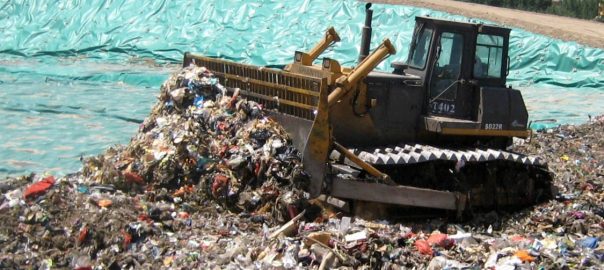






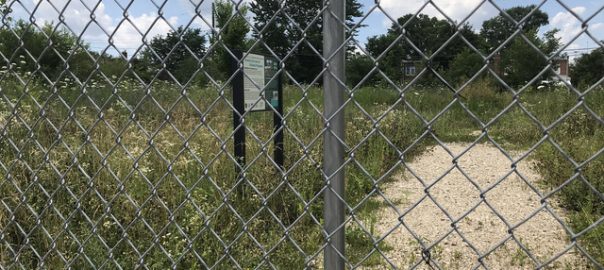

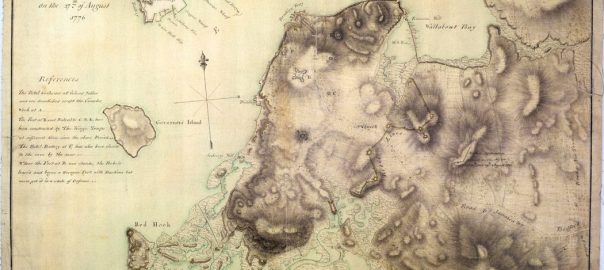
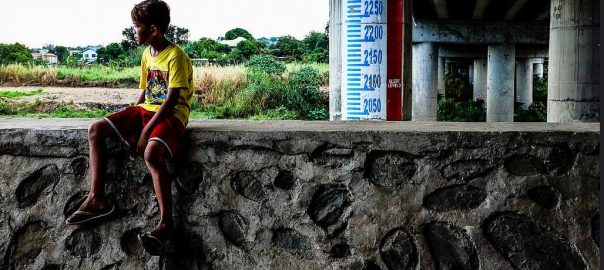
Has anything further happened here?
“…There are two excel sheets that need to be filled with your helping hand.
1. Database for Municipal Solid Waste Management
2. Database for Sewage Sludge/Biosolids
Your kind assistance is highly appreciated. We would like to have data by January 06, 2015”
I think there is something of greater importance that needs to be discussed here as you posted this in DECEMBER 21 2015. Obviously you have perfected time travel.
Dear /Sir Madam
As a new company in the new segment of waste recovery and valuation in Algeria, we are looking at organizing a workshop dedicated to the modern waste management methods through recovery and valuation.
This event will be conducted in partnership with the environment ministry and the national wastes agency who goth gave their green light and high support for the initiative, the national waste management agency promesses promised to promote the event and ensure the required media coverage.
We are looking at the participation of experienced and’ leading companies in the field and would like to know if you are interested to share you experience and become a long term partner in Algeria.
Looking forward to receiving you positive and prompt feedback.
The suggested dates for the event February 2018
International Forum on Waste Management & Recycling – Algeria 2017
Theme: Challenges & Solution for Environmental Sustainability
Thank you
CENTER FOR RESEARCH AND RECOVERY OF WASTE FOR RECYCLING
RAHAL AMMAR
SOCIAL HEADQUARTERS ADDRESS : AMIROUCHE CITY 1200 FAX: 00 213 33 3 10 74
BLOC : B85 N°: 689 –BATNA -ALGERIE MOBILE:00 213 6 98 61 43 62
EMAIL: [email protected]
TOPIC: REQUEST FOR A PARTNERSHIP
Dear
I have some difficulties to identify my eligibility within your funding programs, as an Algerian citizen looking for opportunity of cooperative agreement / Partnership for my project ( Wast Management) to be set in Algeria.
Would you please advise if I can be part of your programs.
I would like you to know that we are the first to develop this idea and inchallah will the first Waste Management Centers in Algeria, the project is very appreciated by uthorities who promised all the required support, for now we are just waiting for a funding party with a profit sharing or a long time partnership to materialize the project and extend it all over the country.
The project is estimated to generate around $ 50,000,000.00 in the first (10) years, and much more after extension to other regions of Algeria, in addition to the environmental impact (very appreciated by the authorities) where we’ll have much better control and management of the wastes.
If you feel that our project will be beneficial for your organization, please have a look at the attached explanatory elements for the southern center and let me know if we can do something together.
Looking forward to receiving your positive feedback.
Explanation
Project Quick View:
* Our Initial technical and economical study was performed in french language, through which we obtained the approval from the government along with the real estate (land) .
* The final study to be adopted will be the one provided by the proved experienced partner, and planing to include in addition to classic wastes recycling (cardboard, plastic rubber glass …..), the organic wastes to composts.
* The first center of research project, recycling and valuing wastes will be mounted in Ouargla over an area of 10 hectares with an estimated investment value of around $ 50,000,000.00
* We are hoping and expecting to extend this activity all over the country, Algeria is big country with 48 states providing endless volume of recyclable materials, promising a successful future at financial and environmental levels.
* The other particularity of this project is that we are the first to bring it in country as all what is existing now are only recycling units relying on few individual suppliers of plastics and cardboard at irregular rates, while our center will be a regular supplier for them, where the Ministry of environment welcomed very well the idea of these centers.
For now, these are the details and figures that I could provide and hope this gave a clear idea of the project.
Thank you for considering our request, please let us know if you need any additional information that may influence your decision.
Best Regards
Ammar Rahal
Dr Ing Schneider:
We have been doing the same thing here as well and have come across the same situation.
How about making contact via linked in.
Your article we have read and taken note.
As always you point out a common feature and a necessary statement in the recorded information about Municipal Solid Waste, that is its water content.
Kindly please advise whether you have determined the difference between Free Water and Total Water contents.
We have been developing a strategy for MSW conversion to manufacture renewable fuels (for transportation) and in that not we may add ethanol, and the importance of knowing the difference between these two water parameters is very essential. Tsinghua and other Learned Universities do not clarify the position, and we winder whether you have.
Our own research and experiments – using the German Standards – and the Essen German studies do not clarify the position either.
Your kindest comments would be useful; thank you, Peter
Municipal solid waste troubles our environment. China government has done their best to solve it. Everyone shall use less plastics and other one-off packaging.
Hello
where can I find information on law and regulation on dispose bottled noni juice that is already imported into China. The bottled juice is not sellable and need to destroy. My company has 37K bottled. What is the disposal fee and other regulation I need to know?
The concept of Urban Mining talks a lot about utilization of urban waste. This is not just about metal, but also of glass, plastic, paper, and even food scraps.
Hi , did you know that there is new technology available to process waste in large quantity with no large smoke stack , and at 50% of the cost of other technology
plant are scalable , small footprint and are in operation under 18 months
please contact me for further details
[email protected]
Daniel
Dear Ma’am Judy Li in Beijing: Greetings to you. Is this discussion still live?
As a Dr Ing in the business of providing solutions to Waste Management and Treatment across the World I found your article recently and considered how to reply. Excuse some of the language as translation from German to English is sometimes difficult to write.
About 8 to9 years past a proposal was set to Beijing to convert all the organic waste in the City/Province to make Biofuel Ethanol and also to produce other Biofuels like Butanol (again for transport) and Methane which could be converted to a substitute for Diesel made from Oil. The City ignored it. Xinghua Unioversity was informed and like the idea as they were always in discussion over modern ideas. The City beijing just carried on with their business as normal approach, let’s carry on doing the same old thing and follow the aims of Incineration and Waste to Energy. What the City of Beijing and Shanghai and Shenzhen and Other areas and provinces had thus continued to do was to follow the old system of continuing to “think” inside the box about waste treatment systems based upon seriously questionable processing routes like incineration and gasification which are then turned into waste-to-energy plants to create energy from the waste and that energy was electricity. This is their understanding and not one which is welcomed.
Incineration (and its new fashionable name gasification) is a mechanism to burn waste to create heat and steam and then electricity is made from the process. Gasification uses less oxygen in the burning but the result is near the same. However in the PRC – Beijing Shanghai Shenzhen Chong Q’ing Nanking etc etc the water content of Municipal Solid Waste reaches over 60% on occasions and that means it cannot be incinerated at all and according to the most authoratitive World Bank documents and other very important Professors in the Universities in China this means that it cannot be incinerated and that any attempts to incinerating would be fool-hardy ans stupid. You cannot burn water. So what do the Bijing and Shanghai Cities do they add Coal to the Waste to help it to burn! What add coal to the incineration plants to help them burn? They add up to 40% by weight of coal to incineration plants to assist in providing the heat to burn the waste – effectively drying the water off – making it burn afterwards, Is it any surprising that these Cities have problems with fumes. These incinerators are effectively small coal fired power stations. And now the city of Beijing is following a similar route to build a series of new incinerator plants including Cha Yong which will be built to deal with 1,500 tonnes per day to which they already know that the water content is so high it will not work and so the City propose to subsidise the company building it in a 50% grant and a huge fee for treatment and huge subsidy of electricity. The same is also proposed again in Shanghai. Do they not realise that this is fraudulantly inexcusable. These incinerators are being built at huge costs by the Chinese Government (people’s) hard earnt money and income taxation. Now we read that Shenzhen is planning another huge monstrosity to incinerate 5000 tonnes per day of Municipal Solid Waste at a cost of $1,500 Million and more when it could be built for less than a quarter and not need a treatment fee and produce over a saving in oil imports of almost 2 million barrels of oil a year and provide enough biofuels for transport equivalent to 500,000 vehicles fuel needs a year.
There is a dire need of a proper waste management strategy; otherwise this will create a disaster.
Greetings from Sri Lanka…!!!
Dear Sir/Madam,
We are a Research Team who is going to develop a database for Municipal Solid waste and Sewage Sludge/biosolids Management in Asian Countries. Though we went through several global, regional and country level reports, we observed that many data are still not available in published documents.
It would be highly appreciated, if you can kindly help us to get the data of your country (Asian Countries) to fill the missing data. There are two excel sheets that need to be filled with your helping hand.
1. Database for Municipal Solid Waste Management
2. Database for Sewage Sludge/Biosolids
Your kind assistance is highly appreciated. We would like to have data by January 06, 2015. .
Many Many thanks in Advance…!!!
With best regards
Lashan Jayawardhana
PhD Scholar
The Chinese urban waste problem is very serious, as well as the Indian urban trash. The urban populations of the both countries are extremely big and the amount of trash produced each year is tremendous! I think that Chinese government will have to invest money in recycling and better trash collecting service. It is good that there are countries that manage their trash perfectly and can help with ideas and methods that they have developed. Thank you for the post! Really good points!
I see that at this moment our waste management system is not capable of taking care of all our waste. According to my colleagues, people are not aware of what exactly can be reused, recycled and reduced and therefore trash everything away together to their yards, trash bins, etc. It is great that there is enough dedication to start such programs but I think that first we should educate people how to reduce their own waste so that we can have a fully functioning waste management system! It will be a small step for man and a giant leap for our environment! Greetings, Rubbish Clearance Finsbury Park Ltd.
In your work, have you come across any dis-aggregated data on urban waste composition? In particular, I’m looking into the landscape organic waste component (trimmings, fall leaves, removed plant material) to try to understand opportunities for innovation in handling this portion of the waste stream. Any data on quantities (ideally as a function of land area) or suggestions appreciated! I assume much of it is unaccounted for (leaves burned in small piles, added to un-separated landfill waste streams, etc…)
Thanks in advance for any thoughts!
Thanks for the book recommendation, Eric! I look forward to reading it. The average Beijing dweller produces about 1 kg/person/day (1 kg = 2.2 lbs), less than the 2.7 lbs/person/day in the U.S. That statistic can be found in the Beijing government’s waste collection data. I would assume that is similar across most large Chinese cities. The use of disposables has become very much entrenched in China. 🙁
Good point, Odile. My preliminary thought exercise on turning waste into a resource did not consider the possible disease transmission danger. I am unsure what the current policies (if any) govern this in China. If food scraps were fed to pigs, it would probably only be possible on a smaller scale to ensure public health safety.
A daunting task!
Feeding swill (food scraps) to pigs is illegal in many countries because of the risks of transmitting foot and mouth disease and others from meat products to pigs and then to humans. The food scraps would need some sort of treatment able to address the potential for such diseases. The cost and compliance requirements of such treatments would need to be balanced against the benefits you highlighted such as lower transport etc..
Nice piece Judy! Do you know “Waste and Want: A Social History of Trash” by Susan Strasser. This book opened my eyes about the informal economy of wastepickers in cities through history. I was also wondering if you know whether waste production rates are different in cities in China from cities in other countries? I have a reference from the U.S EPA indicating that average American municipal waste generation is about 2.7 lbs/person/day.